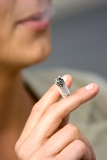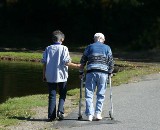Statins: A Literal No-Brainer
Study:Â Statins Donât Decrease Alzheimerâs Risk, Increase Cognitive Decline
If youâre a frequent consumer of news, it may feel like youâre living in a parallel universe at times. Whatâs reported on what network is often avoided or given a totally different spin on another network.
And when it comes to health news, thereâs no better example of this than statins. Here, youâll find information on statins and how their side effects outweigh their perceived benefits. But watch or read news on statins from some major media outlet, and youâre likely to find information on all the benefits of taking statins. That not only will they lower blood pressure levels, but theyâll also cut the risk of stroke, even prevent Alzheimerâs disease.
Some of the smartest people on earth are doing their best to uncover the riddle that is Alzheimerâs disease. A recent string of studies suggests its onset may be due to elevated cholesterol levels in the blood. Though there are other ways of lowering cholesterol levels, this has led the pill-popping public (the scientific community included) to suggest that statin use may be an Alzheimerâs preventer. But a recent study testing this theory reveals a significant flaw in that argument. The flaw? Statins donât decrease the risk of Alzheimerâs: not one iota.
Approximately 26,500 men and women participated in the study, all of whom were between the ages of 40 and 80 and âat riskâ for developing Alzheimerâs or some other form of dementia. The majority of those followed took Zocor for a period of five years; the rest took a lesser-known statin for just over three years. The health statuses of the participants were attended to regularly throughout the study.
Despite the significant amount of precautions taken to assure that the medications taken werenât given short-shrift, the findings revealed no difference among statins in prevention of Alzheimerâs. In short, people who received the statins got Alzheimerâs just as frequently as those who received placebos got Alzheimerâs. This review is published in the most recent issue of The Cochrane Library.
That may have been enough for the average medical professor to denounce statin use with regard to staving off Alzheimerâs. But like the aging athlete who doesnât know when to hang them up, a professor well-versed in statin safety had this to say about what impact statins have to the brain overall:
âThere are a number of case reports and case series where cognition is clearly and reproducibly (emphasis added) adversely affected by statins.â
No one can deny that statins work for some people in lowering cholesterol, but the side effects are far too costly. And when one considers that taking statins to prevent Alzheimerâs may actually impair overall cognition, that, in and of itself, testifies to just how deep those side effects go.
The Fox Newsâ and MSNBCâs will continue to grind their political news through their own individual mills made of spin, but hereâs one thing that canât be spun:Â Statins donât prevent Alzheimerâs; to the contrary, they impair cognition.
In the immortal words of Walter Cronkite, âThatâs the way it is.â
Source:
Science Daily
Posted: April 28th, 2009 under Alzheimer's Disease, cholesterol.
Tags: statins and alzheimer's, statins for cholesterol
Comments: none


















